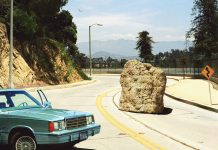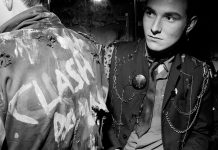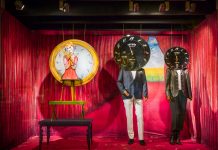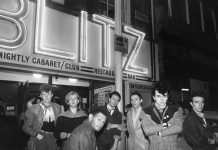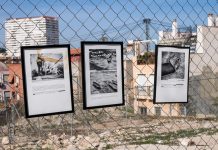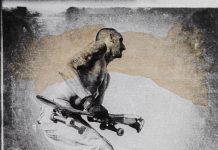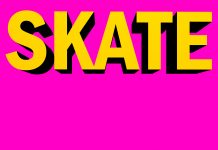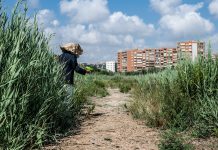
City Skate Tour #7 Alicante, 16 May 2021. Calle Santos Fuertes Fernández – Estación de autobuses. Alicante. Spain.
(1) City Skate Tour starts from a performative idea of urban space through a dissident sample of photographs, texts, photocopied, altered images, all of them belonging to the City 00Skate Days (CSKD) series. (2) To the extent that skateboarding seeks a new vital and social rhythm in the appropriation of the city and the search for alternative itineraries, the photographic exhibition can also become a differentiated urban practice, capable of creating visual thresholds far removed from uses and institutional submissions of art.
(3) The city is the nexus between image and skate. There is no claim in this. There is no other result than that which a passerby could attribute to you when encountering an unexpected image, an attribution of which any value or meaning is unknown. (4) But there are other ways of saying it: City Skate Tour proposes intervention in peripheral enclaves and restores the rhythm of a random, minimal world. That is why the influx of people in those specific spaces do not matter so much as the way in which the image becomes visible through the context that surrounds it. Skateboarding is a metaphor for that threshold.
(5) In City Skate Tour, the idea is projected into a basic action: crossing the city can be considered an imperceptible, inconsequential happening, but if at some point in the journey something causes the passer-by to stop, the action could also become a social fact. In this case, stopping is accompanied by other minimal acts: assembling the images to an urban surface has more to do with creating a site for the image than with a purely expository need.
(6) Between the action and the fact there is a whole compendium of social and artistic traditions that were going to try to show the city as something tangible associated with an altered, even revolutionary dynamic. The references are multiple, but what interested me is, above all, that the city can be used to express ideas, whether complex or simple. Ideas that become tangible in action. (7) The public expression of a work requires some type of social requirement, and this does not have to be restricted to the programmatic conventions of galleries or institutions.
(8) If the Situationists had shown another way of conceptualizing the urban experience based on a playful-constructive behavior, radicalized by their insistence on requesting for themselves a vital state that denied capitalist norms, I find in the gesture of the painter Peter Hobbs a current that unites art, nomadism and situationism. The art critic Thomas Crow would express it as an emerging art form that moved away from any foreseeable gaze: «Peter Hobbs led the situationist aesthetic towards a process of isolated nomadism», and he did so by hosting his canvases on vacant lots in the East End of London to photograph them later as an indirect, but more vivid and real, way of recreating the painting in an urban installation. War photographer Don McCullin helped him create that sensation through photographs that were to fix the fact, that moment, on the margins of institutional life.


Fotocopia #81. Playground. 2015-2021. Texto. Without sanctioned places to practice, skateboarders had been occupying parking lots, empty swimming pools, drainage ditches, plazas, sidewalks, streets, schoolyards, building foundations, and just about any other paved space they could get their wheels on. Municipalities have tended to perceive this occupation as an impediment to traffic flows and as a potential danger to pedestrians and to the skateboarders themselves, which translates into a liability threat for cities. Furthermore, skateboarders’ use of street furniture and hand rails consistently causes minor property damage, which has spawned a secondary industry in the manufacture of architectural deterrents to skateboarding and the dissemination of anti-skate design expertise. Restrictive legislation is on the books in municipalities across the United States, but considering participation levels and property damage, the need for skate facilities has become apparent to «urban managers». With significant input from the skateboard industry, and from local skateboarders themselves, cities have hired skatepark design firms to provide facilities containing a jumble of design elements simulating the urban spaces that skateboarders have inhabited, often illegally. The parks average about 10,000 square feet , approximately the same size as an athletic field. Skateparks often stand alone, but like the athletic field, the sandbox, and the swing set, the skatepark has also become one of many elements that are often sited adjacent to one another on large playgrounds. Referencia. Ocean Howell. Skatepark as neoliberal playground: urban governance, recreation space and the cultivation of personal responsibility, Space and Culture, 2008.
Fotocopia #95. Non-conformity. 2015-2021. Texto. Street skateboarders explicitly enact an urban identity that invokes freedom, non-conformity and engagement with risk. Indeed, the street skateboarding social field has been defined as «dangerous, poetic, authentic, rebellious». The notion that skaters regularly seek out and use spaces which are typically off-limits is integrally linked with the idealisation of freedom; at the same time, there is a significant valorisation of risk that is linked with the use of typically unsupervised, dangerous and off-limit spaces. These ideals of freedom and risk are integrally linked with D.I.Y. culture. Street skaters are often portrayed or refer to themselves as being «self-made». This D.I.Y. ideal purports that skateboarding is a socially democratic enterprise where individuals can freely participate and construct unique styles, practices and identities. Street skating thus involves an element of risk, as individuals are left to their own devices in navigating the social and physical realms of skateboarding. Authentic status is bestowed upon those individuals who are able to exemplify the core values of risk taking and D.I.Y. through their social interactions, way of speaking and dressing and use of urban spaces. Referencia. Matthew Atencio, Becky Beal & Charlene Wilson. The distinction of risk: urban skateboarding, street habitus and the construction of hierarchical gender relations, Qualitative Research in Sport and Exercise, 2009.




